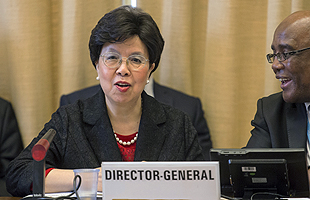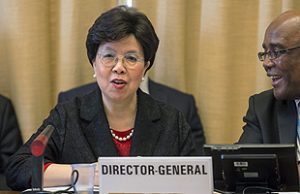From Monday 23rd to Friday 27th May 2016 the 69th World Health Assembly in Geneva was charged with many exciting technical sessions, plenary meetings and side events all geared towards charting new and innovative ways of improving health and general well being of the global community. The following provide key highlights of the agreed resolutions for the assembly.
- WHO Framework of Engagement with Non-State Actors. The World Health Assembly has adopted the WHO Framework of Engagement with Non-State Actors (FENSA), after more than 2 years of intergovernmental negotiations. FENSA represents a major step in WHO’s governance reform. It provides the Organization with comprehensive policies and procedures on engaging with nongovernmental organizations, private sector entities, philanthropic foundations and academic institutions.
- Sustainable Development Goals. Delegates agreed on a comprehensive set of steps that lay the groundwork for pursuing the health-related Sustainable Development Goals (SDGs). They agreed to prioritize universal health coverage, and to work with actors outside the health sector to address the social, economic and environmental causes of health problems, including antimicrobial resistance.
- International Health Regulations. The Health Assembly considered the report of the Review Committee on the Role of the International Health Regulations (IHR) (2005) in the Ebola Outbreak and Response. Delegates commended the Committee for its work. They called on WHO to develop a global implementation plan for the recommendations of the Committee, taking forward immediately those recommendations that are consistent with existing IHR (2005) practice and allowing for further discussion and consideration of the new approaches that are proposed.
- Tobacco control. In a move to further strengthen global tobacco control efforts, delegates decided to invite the WHO Framework Convention on Tobacco Control’s (WHO FCTC) Conference of the Parties (COP) to provide information on outcomes of this biennial event to future World Health Assembly meetings.
- Road traffic deaths and injuries. To support countries’ efforts to reach the SDG target of reducing road traffic deaths and injuries by 50% by 2020, World Health Assembly delegates adopted a resolution requesting Member States to accelerate implementation of the outcome document of the Second Global High-Level Conference on Road Safety 2011-2020 held in November 2015. The resolution calls for national strategies and plans to address the needs of the most vulnerable people on the roads, including children, youth, older people and people with disabilities.
- Delegates adopted 2 resolutions on nutrition. The first, drawn up in response to the recently launched UN Decade of Action on Nutrition from 2016 to 2025, urges countries to make concrete policy and financial commitments to improve people’s diets, and report back regularly on those policies and investments. It calls on UN bodies to guide and implement national nutrition programmes and support monitoring and reporting mechanisms. The second resolution welcomed WHO guidance on ending the inappropriate promotion of foods for infants and young children.
- HIV, viral hepatitis and sexually transmitted infections. The World Health Assembly has adopted 3 global health sector strategies on: HIV, viral hepatitis and sexually transmitted infections (STIs) for the period 2016-2021. The integrated strategies highlight the critical role of Universal Health Coverage. Their targets are aligned with those laid out in the Sustainable Development Goals. The strategies outline actions to be taken by countries and by the WHO secretariat. Each aims to accelerate and intensify the health sector response to further progress towards ending all 3 epidemics.
- The Health Assembly adopted a resolution on mycetoma. Mycetoma is a chronic, progressively destructive inflammatory disease of the skin, subcutaneous and connective tissue, muscle and bone. It usually affects the foot but also can also affect other parts of the body. The new resolution will help raise awareness of the disease.
- Access to medicines and vaccines. Delegates agreed a range of measures aimed at addressing the global shortage of medicines and vaccines, especially for children. Delegates agreed to develop ways to forecast, avert and reduce shortages.
- Research and development. Delegates at the World Health Assembly agreed to accelerate the development of the WHO Global Observatory on Health Research and Development in order to identify gaps in R&D, especially for diseases that disproportionately affect developing countries and attract little investment.
- Integrated health services. The Health Assembly adopted the WHO Framework on Integrated, People-Centred Health Services, which calls for a fundamental shift in the way health services are funded, managed and delivered. Delegates requested WHO to develop indicators to track progress toward integrated people-centred health services.
These are ambitious resolutions that should be taken beyond the World Health Assembly and support countries to own them, so that they impact positively on the lives of the global community.
All comments to Dr Aminu Magashi Garba Coordinator Africa Health Budget Network & Publisher Health Reporters (healthweekly@yahoo.com)





